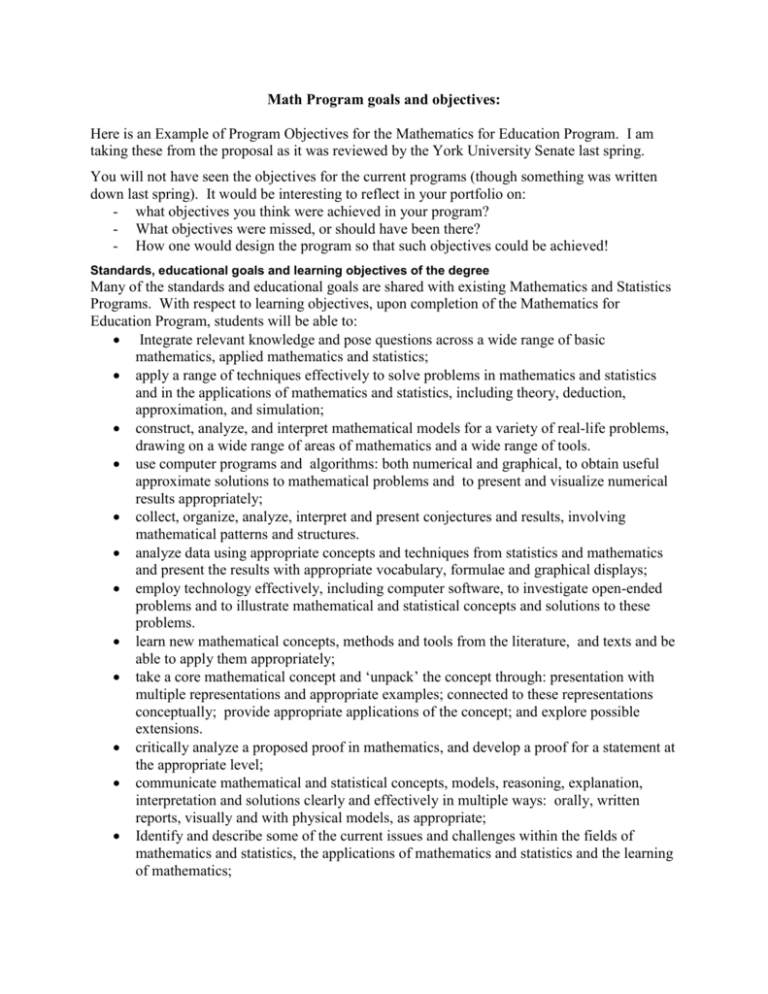Math Program goals and objectives:
advertisement

Math Program goals and objectives: Here is an Example of Program Objectives for the Mathematics for Education Program. I am taking these from the proposal as it was reviewed by the York University Senate last spring. You will not have seen the objectives for the current programs (though something was written down last spring). It would be interesting to reflect in your portfolio on: - what objectives you think were achieved in your program? - What objectives were missed, or should have been there? - How one would design the program so that such objectives could be achieved! Standards, educational goals and learning objectives of the degree Many of the standards and educational goals are shared with existing Mathematics and Statistics Programs. With respect to learning objectives, upon completion of the Mathematics for Education Program, students will be able to: Integrate relevant knowledge and pose questions across a wide range of basic mathematics, applied mathematics and statistics; apply a range of techniques effectively to solve problems in mathematics and statistics and in the applications of mathematics and statistics, including theory, deduction, approximation, and simulation; construct, analyze, and interpret mathematical models for a variety of real-life problems, drawing on a wide range of areas of mathematics and a wide range of tools. use computer programs and algorithms: both numerical and graphical, to obtain useful approximate solutions to mathematical problems and to present and visualize numerical results appropriately; collect, organize, analyze, interpret and present conjectures and results, involving mathematical patterns and structures. analyze data using appropriate concepts and techniques from statistics and mathematics and present the results with appropriate vocabulary, formulae and graphical displays; employ technology effectively, including computer software, to investigate open-ended problems and to illustrate mathematical and statistical concepts and solutions to these problems. learn new mathematical concepts, methods and tools from the literature, and texts and be able to apply them appropriately; take a core mathematical concept and ‘unpack’ the concept through: presentation with multiple representations and appropriate examples; connected to these representations conceptually; provide appropriate applications of the concept; and explore possible extensions. critically analyze a proposed proof in mathematics, and develop a proof for a statement at the appropriate level; communicate mathematical and statistical concepts, models, reasoning, explanation, interpretation and solutions clearly and effectively in multiple ways: orally, written reports, visually and with physical models, as appropriate; Identify and describe some of the current issues and challenges within the fields of mathematics and statistics, the applications of mathematics and statistics and the learning of mathematics; Analyze both within the discipline, and in a larger social, historical and ethical context, some key professional issues.






